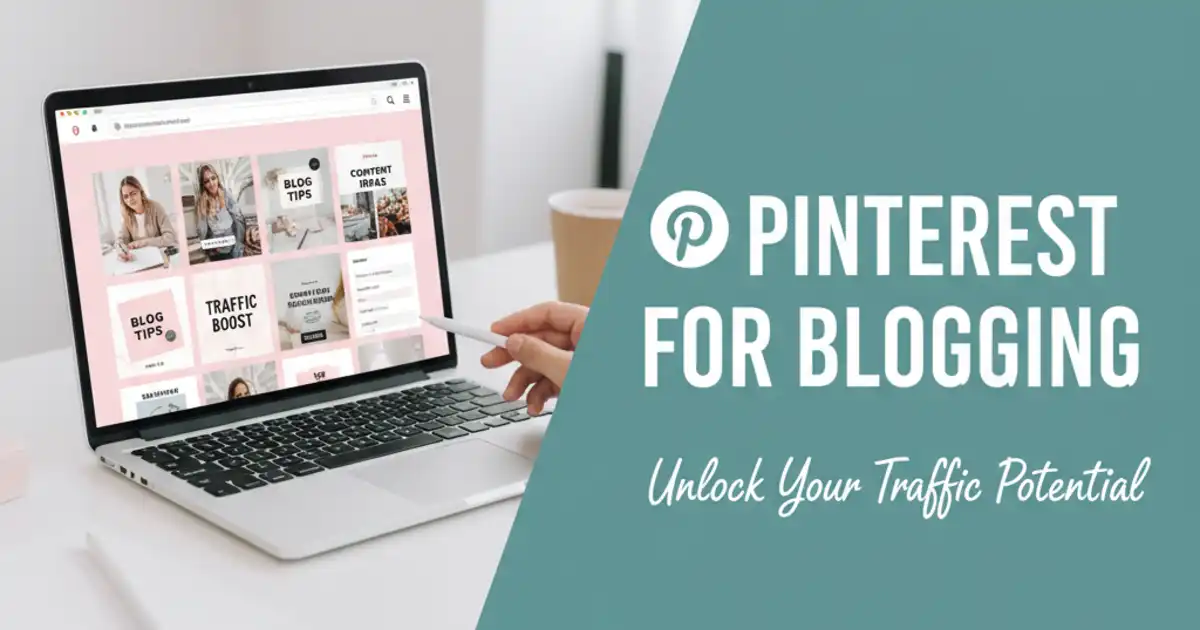Pinterest is one of the most powerful yet often overlooked platforms for driving traffic to blogs. Many people think of Pinterest as a place for sharing recipes, home decor, or fashion inspiration, but in reality, it is a visual search engine with millions of active users searching for ideas and information every day. For bloggers, Pinterest can serve as a consistent and reliable source of organic traffic if used strategically. By understanding how Pinterest works and applying the right techniques, you can grow your blog audience, increase engagement, and even boost revenue.
Understanding Pinterest as a Search Engine
Pinterest is not just a social media platform where people scroll for entertainment it functions more like a search engine similar to Google. Users come to Pinterest with specific interests and keywords in mind, which means they are actively looking for ideas, solutions, or inspiration. When you create content on Pinterest, it can continue to bring traffic for months or even years, unlike other platforms where posts quickly disappear in a feed. By optimizing your pins for search visibility, you ensure your blog posts reach the right audience at the right time.
Setting Up a Pinterest Business Account
To get started with Pinterest for blogging, it is important to create a Pinterest business account instead of a personal one. A business account gives access to analytics, ad tools, and performance insights that help you measure growth and engagement. Once your account is created, fill out your profile completely with your blog name, logo, and a short description that includes relevant keywords about your niche. This not only makes your profile look professional but also helps Pinterest understand your content focus and show it to the right users.
Optimizing Your Pinterest Profile
Your Pinterest profile acts as the foundation for all your marketing efforts. An optimized profile attracts followers who are interested in your niche and encourages them to engage with your content. Use a professional profile image or your brand logo, and write a clear bio describing what your blog offers. Include relevant keywords naturally in your bio so that people searching for similar topics can easily find you. You can also add your blog URL to your profile to direct visitors to your website instantly.
Creating and Organizing Boards Strategically
Boards are collections where you save related pins. Organizing your boards properly helps both Pinterest and users understand what your content is about. Create boards that reflect the main topics of your blog. For example, if you write about lifestyle, you can have boards for health tips, travel inspiration, recipes, and productivity. Each board should have a descriptive title and keyword rich description. This organization not only helps with discoverability but also improves the user experience when visitors browse your profile.
Designing Eye Catching Pins
Pinterest is a visual platform, so the design of your pins plays a huge role in attracting clicks. High quality vertical images with compelling text overlays tend to perform best. Use bold, readable fonts and colors that match your brand style. Make sure your pins clearly convey what your blog post is about. You can use design tools like Canva to create professional looking pins without graphic design experience. Adding your blog name or logo on every pin helps build brand recognition and prevents others from misusing your content.
Writing Strong Pin Descriptions
Every pin should include a clear and engaging description that tells users what they will gain by clicking through to your blog. Pinterest uses these descriptions to understand the content and match it with user searches. Include relevant keywords naturally without overstuffing them. Descriptions that inspire curiosity or promise a helpful result usually attract more clicks. Adding a call to action such as learn more or read the full guide on the blog can encourage users to visit your website.
Using Pinterest SEO to Increase Visibility
Pinterest SEO focuses on using keywords strategically across your profile, boards, and pins. Start by researching keywords that your target audience is searching for using Pinterest’s search bar or keyword tools. These keywords should appear in your pin titles, descriptions, and board names. Consistency in keyword usage signals to Pinterest what your account is about, helping your content rank higher in search results. The more engagement your pins receive, the more Pinterest will promote them to new users, creating a continuous traffic flow to your blog.
Scheduling and Posting Consistently
Consistency is key to success on Pinterest. Regular pinning signals activity to the platform’s algorithm, increasing your chances of reaching more people. Instead of pinning sporadically, create a schedule to post a certain number of pins daily. You can use scheduling tools like Tailwind to plan and automate your pins throughout the week. This ensures your account remains active even when you are busy working on your blog. Re pinning your top performing content over time can also extend its visibility and traffic potential.
Joining Group Boards and Tailwind Communities
Group boards and Tailwind communities are excellent for expanding your reach. Group boards allow multiple contributors to share pins on a common topic, helping your content reach a wider audience. Look for active and relevant group boards within your niche and request to join them. Similarly, Tailwind communities connect bloggers with similar interests who share each other’s pins for mutual growth. These collaborations can bring fresh eyes to your content and increase your chances of going viral.
Tracking Performance and Analytics
Once you start using Pinterest consistently, it is important to track your performance. Pinterest Analytics provides insights into which pins and boards generate the most engagement and traffic. You can see metrics such as impressions, saves, and clicks, which help identify what type of content your audience prefers. Use this data to refine your strategy, improve underperforming pins, and create more of what works. Analyzing your progress regularly ensures you stay aligned with your goals and continue growing your blog audience effectively.
Promoting Blog Posts with Pinterest Ads
Pinterest Ads can accelerate your growth by promoting your pins to a targeted audience. You can set up campaigns that focus on driving traffic, increasing engagement, or building brand awareness. Paid promotions help reach users who may not have discovered your blog organically. By targeting specific demographics, interests, and keywords, you ensure your ads reach people who are genuinely interested in your content. Combining organic and paid strategies can maximize your overall Pinterest success.


